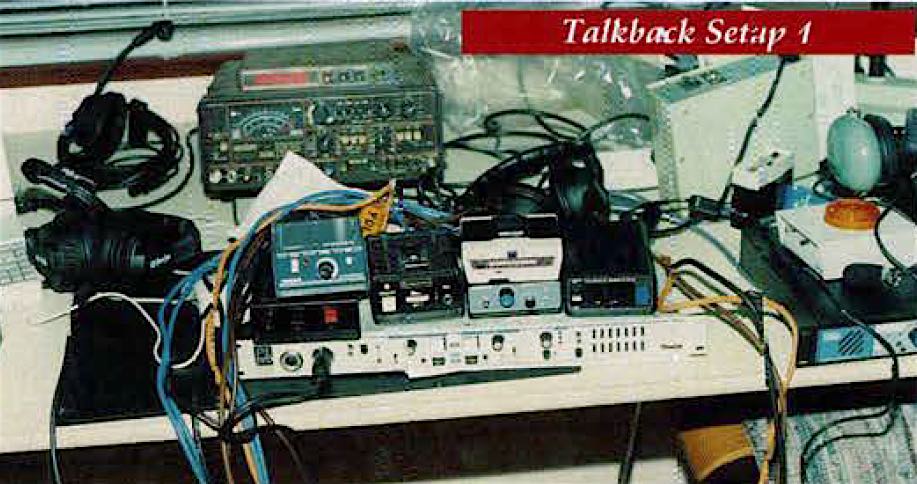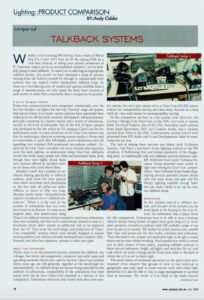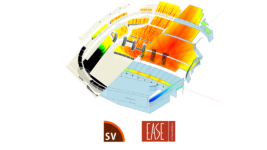News
3 Dec 2018
History: Talkback Systems Compared (1999)

Subscribe to CX E-News
HISTORY: 20+ YEARS AGO
In July 1999 Andy Ciddor conducted a comparison of available talkback systems as part of his regular lighting column in Connections Magazine (CX’s predecessor). BTW, this edition also incorporated the first edition of PresenTech dedicated solely to the AV industry…
Reading note: the resuscitated article includes a few endnotes and possible text conversion snaffoos
Talkback Systems Compared
by Andy Ciddor.
Whether you’re running 300 robotics from a bank of Whole Hog IIs, 6 patt 123’s from an SP40, mixing FOH on a Cam Mac musical or calling your school’s production of JC Superstar; unless you’re an accomplished telepath (fn.1) you’re probably going to need talkback.
To assist you in selecting an appropriate talkback system, this month we have examined a range of systems varying from the build-it-yourself kit through to commercially built systems that can support twelve independent talkback loops. As there are a bewildering array of models and options available from a range of manufacturers, we only tested the fairly basic versions of each system in order that a reasonably direct comparison be possible.
A BIT OF TALKBACK HISTORY
Production communications have progressed substantially over the last few decades, cue lights, the one-way Tannoy (fn.2) stage call system, and various forms of in-house custom systems have essentially been replaced by the off-the-shelf, modular, full-duplex (fn.3) talkback systems; generally consisting of a master station and a bunch of substations, usually in the form of belt-packs.
One of the first of these systems was developed in the late sixties by US company Clear-Com for live performance work. A major attraction of the Clear-Com system was that by employing a phantom powering system similar to those used in sound desks, it could offer full-duplex, active substations with call signalling over standard XLR-terminated microphone cables (fn.4).
Despite the fact that Clear-Com didn’t set up an overseas sales operation until the early eighties, as productions using Clear-Com talkbacks toured the world, many people saw them and purchased them. Even though they were highly priced these new systems offered an excellent facility for those who could afford them.
Murphy’s Law (fn.5) has a number of corollaries relating specifically to talkback systems, aside from the more general ones which document such phenomena as the fact that all cables are either 100mm too short or 25m too long. Murphy clearly states: “All productions require a minimum of n+1 talkback substations.” Where n is the sum of the number of substations that you own, have hired or can borrow.
It comes as no surprise then, that productions using Clear-Com talkback systems always seemed to need more substations than were available, and that such a need always seemed to arise in a timeframe which didn’t permit an additional unit to be imported from the US.
Thus arose the local design and production of “Clear-Com compatible” systems which were initially designed to extend existing systems, but which eventually developed into complete, fully featured, and often less expensive, systems in their own right.
ABOUT THIS COMPARISON
Whilst there is no documented industry standard for talkback; the voltages, line levels, pin assignment, connector and cable types and signalling methods which were used by the first Clear-Com systems thirty years ago are still generally regarded as the benchmark for interoperability.
As talkback loops are always being extended by the addition of substations, compatibility of the substations that were tested with the de facto Clear-Com standard is a feature of this comparison.
Substations were not only tested with their own master station, but were also connected to a Clear-Com MS-232 master station for compatibility testing and then daisy-chained on a loop with all their substations for interoperability testing.
In this comparison we looled at a kit system from Altronics, the current offerings from Clear-Comm in the USA, two levels of system from Technical Projects, also of the USA, Australian made systems from Jands Electronics, DLC and Creative Audio, and a wireless system from Telex in the USA. Unfortunately systems which were promised from EVI Audio and Sound Developments failed to materialise for our test.
The task of testing these systems was shared with Guillaume Laurent, Alan Francis and Aaron Sturk, lighting students at the WA Academy of Performing Arts and trainee exponents of the shaggy dog story as traditionally told over talkback systems between cues.
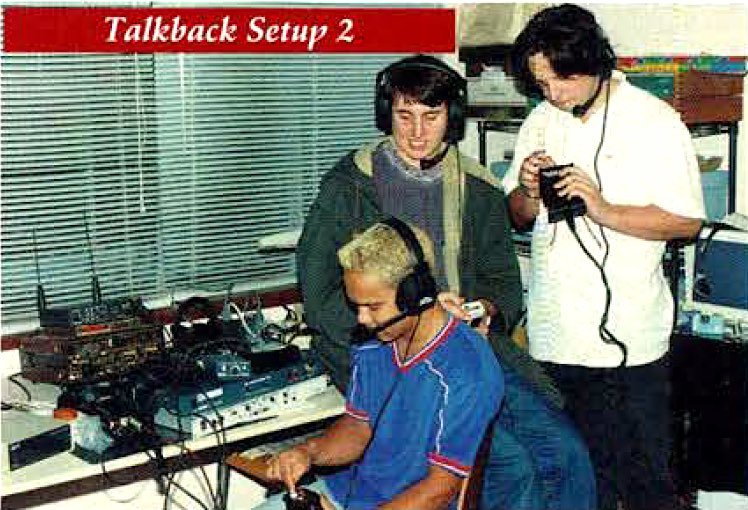
Guillaume Laurent, Alan Francis and Aaron Sturk, WA Academy of Performing Arts lighting students and trainee exponents of the shaggy dog story
Jeff McKenzie from Jands Technical Resource Group provided some useful insight into testing for Clear-Com_ compatibility, John Galbraith from Studio Engineering Services provided abusive phone calls and some dusty test gear and Pro Design Lighting supplied enough headsets and audio cables to set up the various talkback loops.
SUBSTATIONS
As the business end of a talkback system, and the part of the system you are most likely to be buying in the near future, the substation was a major focus for this comparison. Substations have to be able to take a beating: they’re always being kicked, dropped from great heights by truss-spot operators, stored in a roadcase with 200 scaffold clamps or run over by pieces of scenery.
We looked for solid construction, useable belt clips and protection for the knobs, switches and indicators. They also need to be compact and preferably light in weight to make them easy to wear whilst working.
Much production work is carried out in dark corners of busy places, requiring talkback systems to have mic-on indicators, bright call-lights and switches for call and talk which are easily distinguishable from each other in the dark or when the unit is not in direct sight.
The proliferation of technical operations in the production environment often requires that groups of crew in one technical or geographic area may need to communicate with each other independently but also be able to talk to stage management or another area as necessary.
The result of this trend is the multi-channel master station and two variant forms of substation: the dual channel and the binaural. Both versions have two separate talkback loops as input and allow reply to either loop, the dual channel unit gives a mix of the two loops in the headphone feed, allowing the use of a single sided headset, whilst the binaural version feeds each ear of a stereo headset with a different loop.
To enable the total integration of existing communications systems into a single talkback system some manufacturers have produced special purpose substations: speaker-only units to replace the dressing room Tannoy, flash and/or buzzer units for signalling, hands-free speaker and rnic units for control rooms and various interfaces to connect to Evac systems and even an interface for hand-held two-way radios.
There is still a venue (which for the usual reasons shall remain un-named) that has (a) a standard single talkback loop (b) one of those little TOA 12 station telephone-style intercoms (c) a PABX telephone switchboard (d) a set of hand-held two-way radios (e) a dressing room Tannoy.
Many of these systems are redundant in that they connect to the same points, but the remaining systems could be neatly integrated using the interface units that are available. This would overcome the bizarre situation which sees FOH able to contact Prompt Corner via no less than four separate communications systems.
Just how many ways do you need to be told that the house is seated?
MASTER STATIONS
The master station is generally a slave station with additional inputs and/or outputs that allow for interconnection between the talkback loop and other systems such as a program feed or stage overhead mics. They also provide the power supply to drive all of the substations on the loop, although in some basic systems the power supply is a separate box that powers the loop without any of the frills available from a fully-fledged master.
Many master stations also offer a hands-free (mic and speaker) option. As there are such vast differences in the master stations offered by the various companies, the comments and observations about them are in the paragraphs below rather than in the comparison chart.
ALTRONICS / SILICON CHIP
 Originally designed as a kit project for Silicon Chip magazine, this system represents excellent value for money if you can build and test the system yourself. The facilities are very basic, although there is an auxiliary line input capability in the PC board design which allows for the inclusion of a pro gram feed into the loop.
Originally designed as a kit project for Silicon Chip magazine, this system represents excellent value for money if you can build and test the system yourself. The facilities are very basic, although there is an auxiliary line input capability in the PC board design which allows for the inclusion of a pro gram feed into the loop.
The limit of 12 substations per loop may present a problem for some applications. The substations are too delicate to be used as wheelchocks for a roadcase and the call system causes much ear-thumping on the line (30v rather than 11v used in Clear-Com) but the call light is not very bright.
The recommended Altronics aviation headset was quite heavy and the sound isolation so complete that, as one of the WAAPA crew insisted “It feels like your brain is being sucked out through your ears”. There is no master station in this system, simply from 2 to 12 substations and a power supply unit.
CLEAR-COM
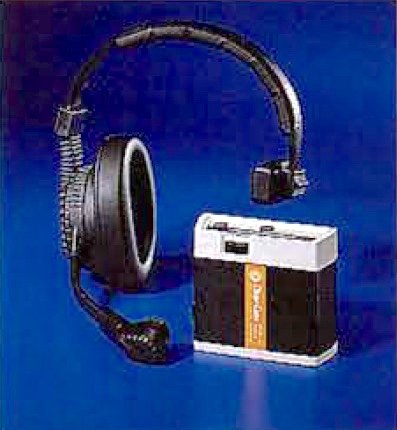 While they may have been one of the original companies in the business, Clear-Com have continued to refine and develop their systems to offer a wide range of systems and options. The “mic-clear” facility built in to Clear-Com systems is a very useful bonus, giving the master station operator the opportunity to turn off all mics especially those cans that the mechs left open when they went to do the set change. The belt packs are very compact and the four-chip LED array used as a call light is very cute.
While they may have been one of the original companies in the business, Clear-Com have continued to refine and develop their systems to offer a wide range of systems and options. The “mic-clear” facility built in to Clear-Com systems is a very useful bonus, giving the master station operator the opportunity to turn off all mics especially those cans that the mechs left open when they went to do the set change. The belt packs are very compact and the four-chip LED array used as a call light is very cute.
Master stations range from two channel to four, eight and twelve channel systems with 20 substations being possible on each loop, but the arrangement of the channel select buttons and call lights on the master stations caused a great deal of confusion. There are speaker stations, a flashing/buzzing substation, wireless talkback and two-way radio interfaces, broadcast commentary stations and a whole slew of other interfaces to all kinds of communications systems.
CONCERTCOM
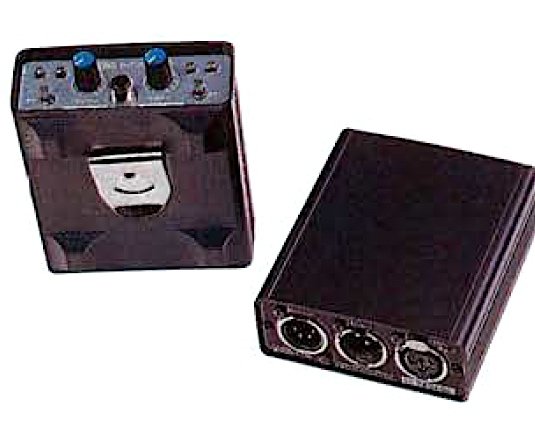 Creative Audio have produced a well thought through range of systems which go toe-to-toe with the quality and design of the Clear-Com products. The superbright LED’s on the substations are actually too bright to comfortably look at under some conditions. The talk keys are sometimes literally a pain to operate, and the function labelling is small and lower in contrast than most other units. Master stations range from two to four channel and offer a full range of inputs and outputs to allow for interfacing to wide range of external systems and for daisy chaining of master stations. The speaker stations are well designed and provide a surprising clear signal.
Creative Audio have produced a well thought through range of systems which go toe-to-toe with the quality and design of the Clear-Com products. The superbright LED’s on the substations are actually too bright to comfortably look at under some conditions. The talk keys are sometimes literally a pain to operate, and the function labelling is small and lower in contrast than most other units. Master stations range from two to four channel and offer a full range of inputs and outputs to allow for interfacing to wide range of external systems and for daisy chaining of master stations. The speaker stations are well designed and provide a surprising clear signal.
DLC
Developed originally to be used in the hire and production operations at Pro Design Lighting, these basic but very robust systems have been taken up by the WA market because of their construction, price and availability.
The substations are heavy but strong enough to use as wheel chocks for a road-train. The identical talk and call switches are a pain and require too much force to work comfortably in a desktop situation. The master stations are available from two to six channels with line in and line out capabilities and a socket for a desklamp. There is also an “Executive Substation” which sits on a desk and features a built in “Littlelight” desklamp.
EZICOM
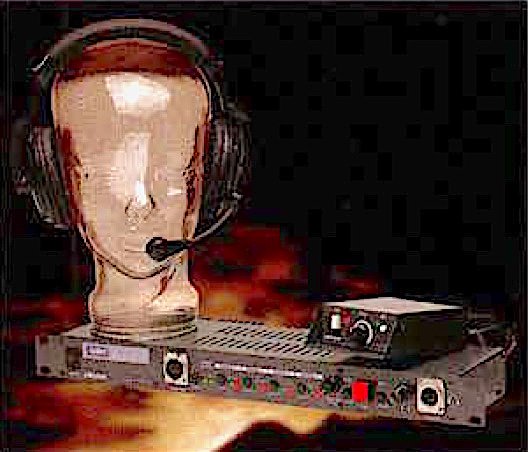 Developed by Jands long ago for use in their own production and hire operations the Ezicom systems have carved themselves a niche in the Australian market as the bread and butter talkback unit for all occasions.
Developed by Jands long ago for use in their own production and hire operations the Ezicom systems have carved themselves a niche in the Australian market as the bread and butter talkback unit for all occasions.
You couldn’t fit all of the Jands substations sold in the last couple of decades into the road-train whose wheels you could chock with their robust substations. The substation mic switch is difficult to switch off. Master stations come in two channel and four channel versions, but the two channel version disappointingly lacks a line input for program or stage overhead feeds.
PRODUCTION INTERCOM
Technical Projects Production Intercom systems cover the entire range of talkback possibilities offering substations in single channel, dual channel, binaural and switched single channel versions, speaker substations, a radio transceiver interface, a flasher/buzzer substation, signal splitter/isolators, battery supply interfaces, a wall-plate sized substation and a line-level input substation.
The substations are somewhat bulkier in shape than most and use a switch with a hard-to-see mechanical indicator rather than a mic on indicator light. There is a power supply unit which can be used to form a low budget no-master system and a system of master stations which can be extended from two to six channels via an extender module. The master stations and their separate power supply modules, although very solidly built, have a very seventies feel with their plain black boxes and incandescent-lit buttons.
RADIOCOM
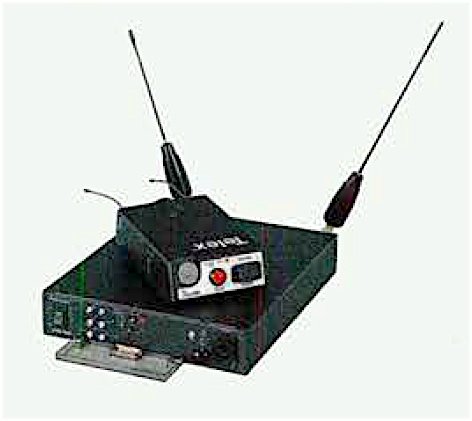 The Telex RadioCom system that was tested was a demonstration model that had long-since had its manual pilfered by a previous tyrekicker, which unfortunately meant that we were unable to interface it completely into our reference Clear-Com system before it was whipped out of our hands, blindfolded and taken to a secret military destination.
The Telex RadioCom system that was tested was a demonstration model that had long-since had its manual pilfered by a previous tyrekicker, which unfortunately meant that we were unable to interface it completely into our reference Clear-Com system before it was whipped out of our hands, blindfolded and taken to a secret military destination.
We later established that [what] we needed was a simple line-balancing interface to solve our problem. The full-duplex radio communications worked flawlessly until the substation was over half a block away, with the only weirdness being the lack of sidetone (fn.6) in the headsets which we later discovered was adjustable (if only we COULD RTPM). If only they weren’t around $8K for a single unit.
CHOICES
You can pretty much pay as little or as much as you want for a production talkback system. At each level of quality and functionality there are alternatives which give you, the buyer the opportunity to shop around.
As always, if a company really believes that their products can do the job for you, then they will be willing to arrange a for a trial of the system to prove its value and suitability to your needs.
Footnotes:
1. It is of course well known that all Stage Managers, in addition to being infallible, are usually telepathic.
2. Loudspeakers manufactured by Tannoy have lent their name to announce-only type backstage call systems.
3. Full-duplex systems allow continuous bi-directional commumications (like telephones). Half-duplex systems allow bi-directional one-speaker-at-a-time communications (like a two-way radio).
4. As a comparison: the in-house developed lighting talkback system at GTV9 at this time provided similar capabilities over multicore cable with 9 pin F&E connectors.
5. Murphy’s Law also known as Sod’s Law states quite simply ‘Anything that can go wrong, will go wrong:”
6. Hearing your own voice in your headset.
From the July 1999 edition of Connections Magazine. Read all back issues of CX or Connections Magazine for free or search our archive www.cxnetwork.com.au
© CX Media
Further reading on Comms:
Technical Terms Used in Comms – Simon Byrne (CX Nov 2018)
Communications – A ‘How To’ – Jimmy Den Ouden (CX June 2009)
Talkback Systems Compared – Andy Ciddor (Connections July 1999)
Subscribe
Published monthly since 1991, our famous AV industry magazine is free for download or pay for print. Subscribers also receive CX News, our free weekly email with the latest industry news and jobs.

